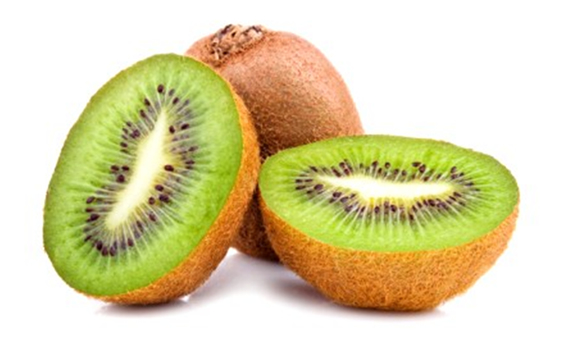Released on EurekAlert! On July 10, 2014
http://www.eurekalert.org/pub_releases/2014-07/fl-nrf071014.php
Study explores improvements in the absorption of vitamin A when avocados are eaten with tomatoes or carrots
IRVINE, Calif. (July 10, 2014) – Consuming a whole fresh avocado with either an orange-colored tomato sauce or raw carrots significantly enhanced provitamin A carotenoid (alpha- and beta-carotene) absorption and conversion of these carotenoids to an active form of vitamin A, according to new research (1) published in The Journal of Nutrition.
Vitamin A is involved in reproductive health and growth promotion; helps support healthy skin, immune function, and vision; and has antioxidant properties. Provitamin A carotenoids, like alpha- and beta-carotene, impart the orange and yellow colors to many fruits and vegetables. The body converts these plant pigments into an active and usable form of vitamin A.
The research, “Avocado consumption enhances human post-prandial absorption and conversion from a novel high beta-carotene tomato sauce and from carrots,” conducted at The Ohio State University and supported by the Hass Avocado Board (HAB), investigated if avocados could help the body better use and absorb vitamin A from carotene-rich foods when eaten together.
Specifically, the research was based on two randomized, two-way crossover feeding studies in 12 healthy men and women. The first study investigated if fresh avocado, when eaten with high beta-carotene tomato sauce, would promote the absorption of provitamin A carotenoids, and the conversion of these carotenoids to an active form of vitamin A. The second study investigated the same outcome, but replaced high beta-carotene tomato sauce with raw carrots.
For the first study, researchers found that compared to a tomato sauce meal without avocado, the addition of one avocado (150 g):
-
More than doubled (2.4 times) beta-carotene absorption
-
More than quadrupled (4.6 times) the conversion of provitamin A (inactive vitamin form) to vitamin A (active vitamin form)
Similarly, researchers found in the second study that compared to a raw carrot meal without avocado, the addition of one avocado (150 g):
-
Significantly increased beta-carotene absorption 6.6 times
-
More than quadrupled (4.8 times) alpha-carotene absorption
-
Significantly increased (12.6 times) the conversion of provitamin A (inactive vitamin form) to vitamin A (active vitamin form)
“The results of this study strengthen the current body of research on this topic and complements a previous study (2) conducted in my lab that showed a similar enhancement in carotenoid absorption with one-half of an avocado (75 g),” said Steven Schwartz, PhD, Professor, Carl E. Haas Endowed Chair, The Ohio State University. “The results also provide promising clues and a basis for future research to determine avocados’ effect on the conversion of provitamin A to vitamin A.”
“Pairing certain foods together is more than just about taste – specific foods eaten together can help your body utilize the benefits more effectively. We know that avocado consumers are interested in foods that act like a ‘nutrient booster,’ ” said Nikki A. Ford, PhD, Director of Nutrition, HAB. “While additional studies are needed to determine if these results can be applied to everyone, the studies’ outcomes help to strengthen and advance the body of published research on avocado benefits and their role in everyday healthy living. Avocados are a nutrient dense, cholesterol-free fruit with naturally good fats, and are a delicious and easy way to add more fruits and vegetables to everyday healthy eating plans.”
###
To view the abstract or the full study visit http://jn.nutrition.org/content/early/2014/06/04/jn.113.187674.full.pdf+html
About the Hass Avocado Board
The Hass Avocado Board (HAB) is an agriculture promotion group established in 2002 to promote the consumption of Hass Avocados in the United States. A 12-member board representing domestic producers and importers of Hass Avocados directs HAB’s promotion, research and information programs under supervision of the United States Department of Agriculture. Funding for HAB comes from Hass avocado producers and importers in the United States.
In 2010, HAB established a Nutrition Research program to increase awareness and improve understanding of the unique benefits of avocados to human health.
For a comprehensive collection of published nutrition and scientific literature, authoritative reports, and other articles on or related to avocados, their nutrients and eating patterns that include them, visit http://www.AvocadoNutritionCenter.com.
For more information visit http://www.LoveOneToday.com or follow HAB on Facebook, Twitter, Pinterest and YouTube.
1. Kopec RE, Cooperstone JL, Schweiggert RM, et. al. Avocado consumption enhances human post-prandial absorption and conversion from a novel high beta-carotene tomato sauce and from carrots. J Nutr. 2014; Jun 4. [Epub ahead of print] 2. Unlu NZ, Bohn T, Clinton SK, Schwartz SJ. Carotenoid absorption from salad and salsa by humans is enhanced by the addition of avocado or avocado oil. J Nutr. 2005; 135: 431-6.
Original Article released:
http://www.eurekalert.org/pub_releases/2014-07/fl-nrf071014.php
Link Cited on: LINK de DIET
http://www.nutritio.net/linkdediet/news/FMPro?-db=NEWS.fp5&-Format=detail.htm&kibanID=45271&-lay=lay&-Find





























